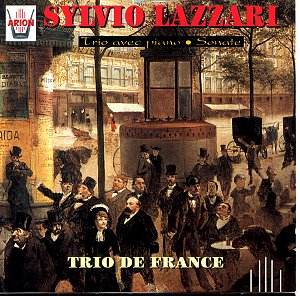 Composer: Joseph-Ermend Bonnal
Composer: Joseph-Ermend Bonnal
Works: String Quartet No. 1 (1919), String Quartet No. 2 (1938)
Performers: Quatuor Debussy
Recording: Aizac (07), 6-9 Oct 1999
Label: ARION
Joseph-Ermend Bonnal, an often-overlooked figure in the landscape of early 20th-century French music, emerges with striking clarity in this compelling recording of his two string quartets by the Quatuor Debussy. Born in Bordeaux in 1880 and educated at the Paris Conservatoire, Bonnal’s music reflects a rich tapestry woven from influences such as Ravel and Fauré. His First Quartet, composed in the aftermath of World War I, is a testament to the resilience of the human spirit and the creative impulse that flourished amid the turmoil of the era. The Second Quartet, written in 1938, showcases a more introspective side, marked by a certain melancholic distance that echoes the changing tides of European society on the brink of another conflict.
The Quatuor Debussy’s interpretation of the First Quartet is nothing short of revelatory. Their approach channels the Ravelian vibrancy that permeates the work, particularly in the second movement where the ensemble captures the undisciplined exuberance of nature—depicted through fluttering motifs and shifting dynamics that evoke the rustle of leaves and the play of light. This movement exhibits an exquisite balance of power and delicacy, with the violins weaving a tapestry of sound that is both lush and transparent. The third movement’s expressionistic qualities are articulated with a nuanced understanding of Bonnal’s harmonic language, reminiscent of the emotive landscapes found in the works of Schrecker and Van Dieren, yet distinctly Bonnal in its invocation of nostalgia and yearning.
The finale returns to the effervescent spirit of the earlier movements, with echoes of Warlock’s instrumental colorations. The Quatuor Debussy executes this with remarkable precision, particularly at 06:10, where a delicate interplay of textures showcases their faultless judgment in dynamic gradations. The quartet’s command of the score allows Bonnal’s intricate counterpoint to unfold organically, reinforcing the work’s impressionistic essence. The Second Quartet, while more subdued and sepia-toned, does not lack in complexity; the Quatuor Debussy navigates its floating melodies with a fluidity that enhances the listener’s immersion in Bonnal’s idiosyncratic sound world.
Recording quality is exemplary, with ARION providing a sonorous and well-balanced soundstage that allows each instrument’s character to shine through without overshadowing the ensemble’s cohesion. The clarity of the strings, coupled with a natural reverberation, creates an intimate listening experience that draws the audience into Bonnal’s richly textured musical language. Compared to other recordings of string quartets from this period, such as those of the Calvet Quartet, the Quatuor Debussy’s interpretation stands out for its lively engagement with the material and its commitment to illuminating Bonnal’s unique voice.
Bonnal’s music, imbued with the essence of South West French folksong and impressionism, deserves greater recognition and more extensive representation in the concert repertoire and recorded catalog. The Quatuor Debussy, in collaboration with ARION, has taken a significant step toward rectifying this neglect, presenting works that resonate with both historical context and contemporary relevance. As this recording reveals, Bonnal’s quartets are not merely artifacts of a bygone era but living, breathing compositions that continue to inspire and captivate. The call for more recordings of Bonnal’s orchestral works and other compositions is not just a plea for preservation but a recognition of the depth and richness that his music offers to the modern listener.
